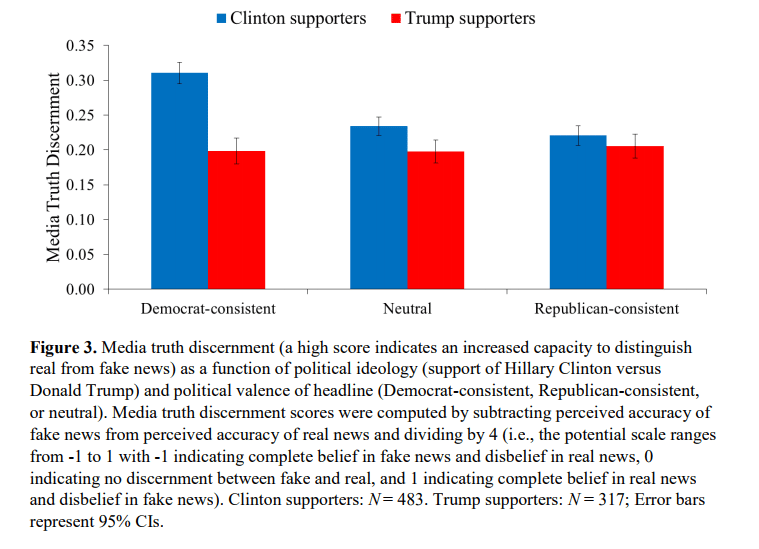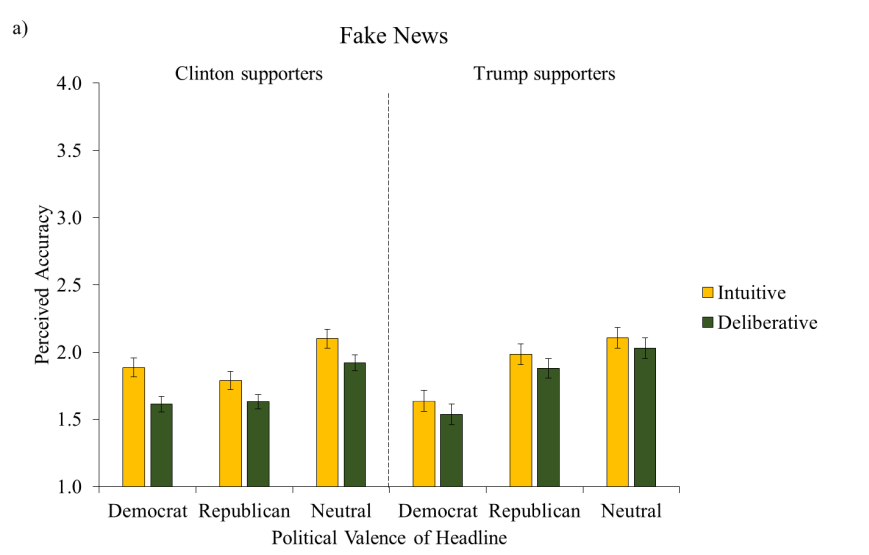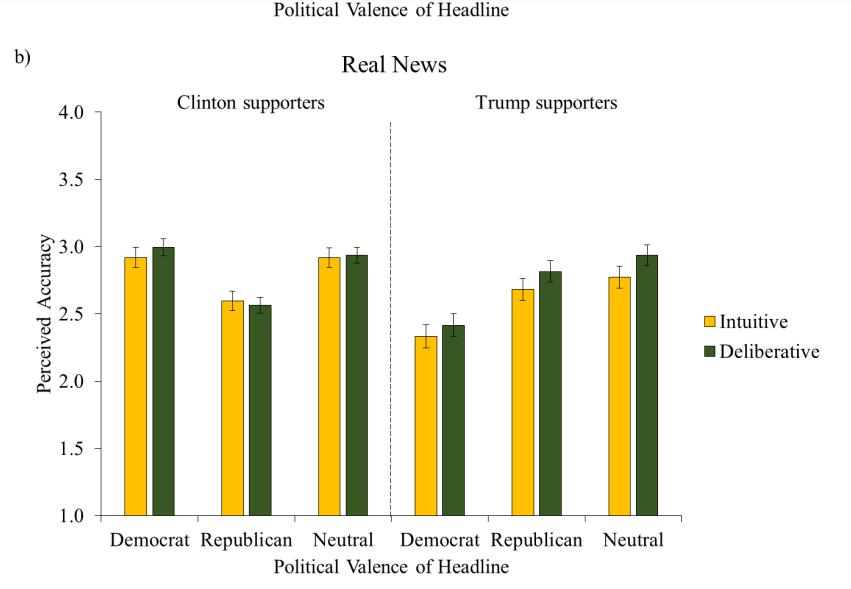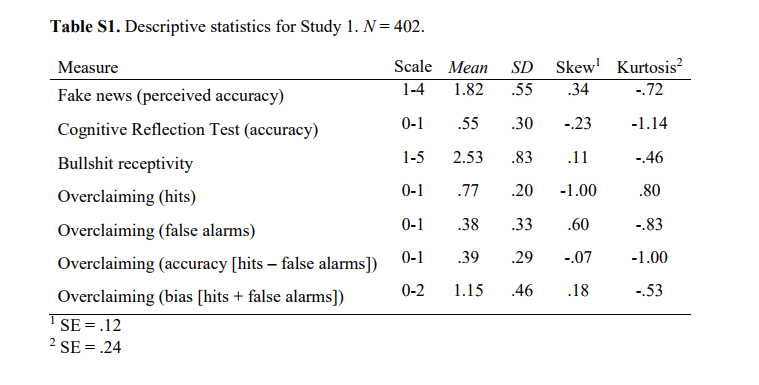The persuasiveness of fake news sites can be summed up in one statistic: In 2016 the "likes" on Facebook was actually greater for the top 20 fake news items than the top 20 real news items. This can be a significant problem. "Inaccurate beliefs pose a threat to democracy and fake news represents a particularly egregious" avenue to propagate those beliefs, Pennycook and Rand wrote in a report released last week.
Titled "Who falls for fake news? The roles of analytic thinking, motivated reasoning, political ideology, and bullshit receptivity," the authors first tested a roughly equal number of men and women based on their propensity to think analytically and their receptivity of "pseudo-profound bullshit."
Then they exposed the test audience to real and fake news sites headlines that had both political and neutral tilts. These headlines included "Rudy Giuliani calls Hillary Clinton 'too stupid to be President,'" (real) as well as "Mike Pence: Gay Conversation Therapy Saved My Marriage," (fake).
Some of the news headlines were attributed to sources such as The New York Times (real) and Politicono.com (fake) while other news headlines were unattributed. The attribution of news source did not tilt the discernment between fake and real news as much as did the study participant's willingness to engage in critical thinking.
Comment: In the real world fake news most often comes from 'real' news sources - especially The New York Times.
The best predictor of those who fall for fake news sites was a lack of critical thinking
The most significant factor in determining who falls for fake news sites could be found in a participant's propensity to think analytically as measured through a Cognitive Reflection Test (CRT). "This was true regardless of whether the article's source was indicated (which, surprisingly, also had no main effect on accuracy judgments)," the report observed. "Our results indicate that the propensity to think analytically plays an important role in the recognition of misinformation, regardless of political valence - a finding that opens up potential avenues for fighting fake news," the report noted, while also pointing to one of several political biases among study participants.
The study observed the inclinations of Hillary Clinton supporters to sniff out fake news through "a negative correlation between CRT and perceptions of fake news accuracy."
The ability to be analytical was the best predictor of those who could sniff out fake news sites across the political spectrum. "Trump supporters who scored higher on the CRT were more likely to view both Democrat- and Republican-consistent real news as more accurate," the report noted, concluding "analytic individuals were better able to discern partisan real from partisan fake news across the political spectrum."
The report noted the key to ferreting out fake news:
Across three studies with 1606 participants, we found consistent evidence that analytic thinking plays a role in how people judge the accuracy of fake news. Specifically, individuals who are more willing to think analytically when given a set of reasoning problems (i.e., two versions of the Cognitive Reflection Test) are less likely to erroneously think that fake news is accurate. Crucially, this was not driven by a general skepticism toward news media: More analytic individuals were, if anything, more likely to think that legitimate ("real") news was accurate. All of the real news stories that we used - unlike the fake ones - were factually accurate and came from sources with actual editorial norms. Thus, our evidence indicates that analytic thinking helps people to accurately discern the truth in the context of news media. This was evident regardless of whether the news source was present, and for both familiar and unfamiliar headlines. More analytic individuals were also better able to discern real from fake news regardless of their political ideology, and of whether the headline was Pro-Democrat, Pro-Republican, or politically neutral.Political bias a factor in fake news sites acceptance
"CRT performance was a stronger negative predictor of fake news accuracy judgments among Clinton supporters than among Trump supporters," the report stated.
The correlation between analytical Trump voters and identification of real news "suggests that factors that undermine the legitimacy of traditional news media may exacerbate the problem of inaccurate political beliefs among Trump supporters, who engaged in less analytic thinking and were overall less able to discern fake from real news (regardless of the news' political valence)."
The report turned to "bullsh#t receptivity," the use of overblown buzzwords and sophisticated sounding phrases to describe items that had little meaning, and found it "correlated negatively with news accuracy judgments for all types of fake news sites regardless of political ideology."
What mattered most, however, was the willingness for news consumers and voters to exercise the muscle at the top of their body:
Our evidence indicates that people fall for fake news because they fail to think; not because they think in a motivated or identity-protective way. This suggests that interventions that are directed at making the public more thoughtful consumers of news media may have promise. Ironically, the invention of the internet and social media - which resulted from a great deal of analytic thinking - may now be exacerbating our tendency to rely on intuition.Read the full study here:
Pennycook, Gordon and Rand, David G., Who Falls for Fake News? The Roles of Analytic Thinking, Motivated Reasoning, Political Ideology, and Bullshit Receptivity (August 21, 2017). Available at SSRN: https://ssrn.com/abstract=3023545











Reader Comments
There are only eight Ivy League institutions for future rulers and their managers in the US. They are Brown University, Columbia University, Cornell University, Dartmouth College, Harvard University, the University of Pennsylvania, Princeton University, and Yale University..
Any information out of those six institutions can automatically be classified as manipulative.